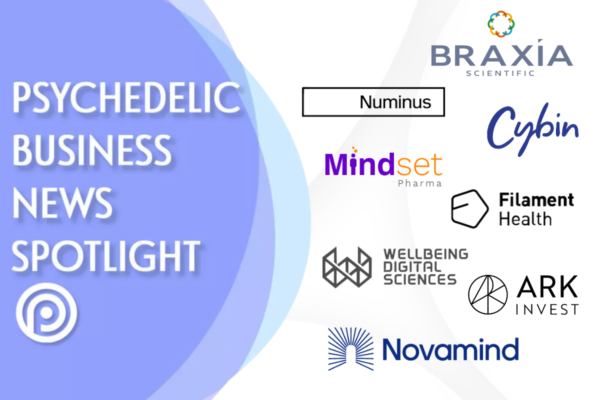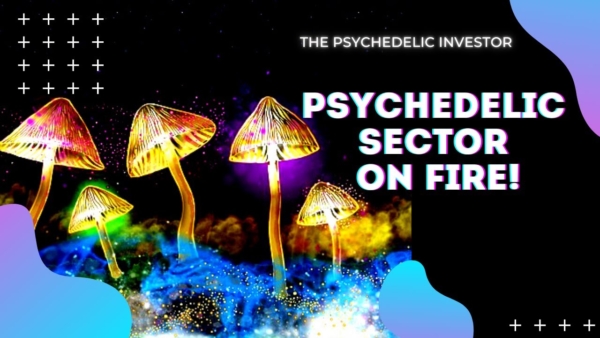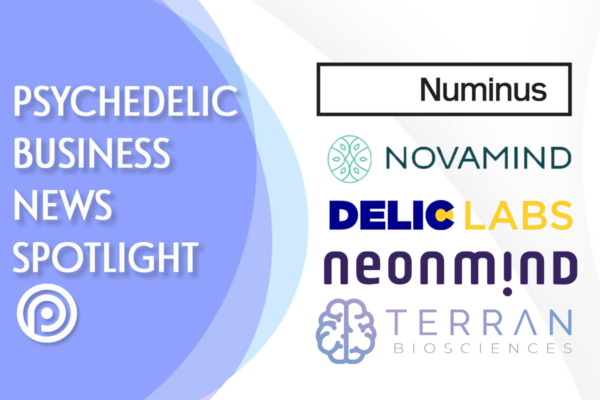
Over the past two weeks, some major changes were announced by MindMed (Nasdaq: MNMD, NEO: MMED). It started on August 4th, when the psychedelic medicines company announced that they would be conducting a 1-for-15 reverse share split. And on August 12th, MindMed appointed two new members to its board. But the truly momentous news came the day before, during the company’s quarterly conference call: MindMed is putting their 18-MC program on ice.
18-MC, also known as MM-110, is a next-generation psychedelic that MindMed had hoped to use to treat Opioid Use Disorder. Modeled on the extremely hallucinogenic ibogaine, 18-MC was modified so that it would not cause a hallucination. One of the company’s first public programs, the excitement surrounding the potential of 18-MC attracted many early investors —myself included.
With the program on indefinite hold, along with further cuts that will be explained in this article, it’s time to take another look at the company and the stock. In this article, I will explain MindMed’s given reasons for the major shakeup, and then provide my thoughts and analysis.
What is happening with 18-MC/MM-110?
MindMed earlier this year had announced positive topline data from a Phase 1 clinical trial of 18-MC, and it looked set to enter a Phase 2a trial attempting to treat opioid withdrawal symptoms this year. However, as CEO Robert Barrow explained in the company’s Q2 conference call, in their discussions with the FDA, the organization requested additional preclinical information regarding the drug before they would approve a Phase 2a trial.
As conducting this research would be time and capital intensive, the company decided to reallocate resources away from this program and towards their MM-120 (LSD) and MM-402 (R(-)-MDMA) programs, which they “believe have a higher probability to generate near-term value for our shareholders.”
By redirecting funds to their “highest priority programs,” MindMed aims to extend their “cash runway further into 2024.”
For context, as of the end of the second quarter, 2022, MindMed had C$105.7 million in the bank, and during the first 6 months of the year they spent C$28.0 million. Assuming they continue spending cash at the same rate, the company would only have enough funds to sustain itself for 7 quarters, or less than two years —and this is ignoring the fact that costs will likely rise as the company moves further into the clinical trial process.
In other words, the company is going to have to raise cash, most likely through dilution, within a couple of years. As 18-MC had to return to preclinical trials, MindMed did not judge that their limited resources —both in time and money— would be best served on this project. Rather, MindMed believes it is best for shareholders to focus their “resources on advancing our MM-120 program in psychiatric indications, specifically Generalized Anxiety Disorder and Attention Deficit Hyperactive Disorder, and our MM-402 program in Autism Spectrum Disorder.”
Is 18-MC dead forever?
The short answer is, it’s too early to tell. While announcing that they were putting the program on hold, Rob Barrow several times in the conference call left the door open to returning to the next-generation psychedelic.
One such way 18-MC/ MM-110 could be revived is through a partnership. During the conference call, Barrow said that MindMed is “undertaking efforts to seek non-dilutive sources of capital and or collaborations with third parties to address these non-clinical hurdles, and depending on interest would revisit a Phase 2 development program for MM-110.”
In other words, if MindMed can find a partner willing to front the costs of the preclinical work needed to be done, in exchange for some form of profit sharing if 18-MC ends up being effective, the program may be reborn.
Another possibility for the revival of MM-110 could be that MindMed restarts the program itself in the somewhat distant future. In response to a question on the topic, Barrow said that “we do see value and potential in this program, and at the appropriate time in the future we will re-evaluate moving forward into a Phase 2 program.”
In other words, if MindMed is successful in their LSD and R(-)-MDMA programs, and in the future the company is not in as much of a cash-crunch, they could decide to fund the needed work themselves. Though of course, this would require a lot going right for the company over the next several years.
All of that being said, MindMed obviously is putting a hold on this program rather than other ones for a reason. They may believe that based on the data they have seen, the likelihood of the drug being effective is too low to justify the cost. If this is the case, then it is possible that this truly is the end of the road for 18-MC.
What else is being cut?
The cuts are not ending with the 18-MC program, however. To get their financial house in order, Rob Barrow also announced that MindMed is “reducing the allocation of resources to other early-stage research and development programs.”
So what exactly is being cut, other than 18-MC?
To start, we know that Project Angie, attempting to treat chronic pain with LSD/MM-120 is at least being put on hold. During the call, Barrow alluded to this, saying that they are “prioritizing the research of MM-120 in psychiatric disorders,” though “at an appropriate time in the future, we intend to continue to explore indications in other disease areas, such as chronic pain.”
So it does not sound like the project is being canceled, but planned Phase 2 trials (presumably other than the current trial investigating treating cluster headaches, which is already underway) will likely be put on hold indefinitely.
Further than this, no other mentions were made of what specifically is being cut, though we can make some inferences based on the programs that were neither mentioned during the conference call, nor their press release detailing their quarterly successes.
For example, we did not hear any updates on the company’s DMT program, which is in a Phase 1 trial, nor their MM-823 (noribogaine) program, which is in preclinical trials. Likewise, we did not hear any updates on their work to create novel tryptamines.
Given this, it looks like almost everything that is not their MM-120 (LSD) or MM-402 (R(-)-MDMA) program is at a minimum being put on hold. Though of course, they may continue working on a couple of projects in secret, particularly if they have a next-generation LSD in the works with a shorter duration of effect (this is just a guess on my part).
What is next for MindMed?
During the call, MindMed’s CEO made it very clear that the company is going to be focussing almost all of its energy on their LSD and R(-)-MDMA programs. The company believes that executing a “fastest to market strategy for MM-120 and MM-402” using their newly “lean and efficient team” is the best option for the company to “generate near-term value for our shareholders.”
In other words, expect to see updates over the coming year or two on their programs attempting to treat Generalized Anxiety Disorder, Adult ADHD and Autism Spectrum Disorder, and little else.
It is unclear how much these cuts will expand MindMed’s financial runway. During the call, Schond Greenway, the company’s CFO, said that MindMed has “well over 18 months of runway based on the current budget.” Perhaps MindMed had already stopped allocating resources to these projects before the announcement, and when combined with the increased capital that will be needed to fund Phase 2 and 3 trials, we still come out to 6-7 quarters.
Or perhaps the “current budget” does not reflect these cuts, and MindMed can push their runway closer to the end of 2024.
Either way, this will not be enough time for the company to bring MM-120 and MM-402 through Phase 3 trials and allow them to start earning revenues from them. This means that dilution is in the cards in the next couple of years for the company. Though, as I have said many times before, this is to be expected, and is part of the drug development process.
My thoughts
Many reading this will know that I am one of the earliest MindMed investors, buying the stock on the day of its IPO two years ago. If you watched my early MindMed videos on YouTube, you will know that I was very excited for the potential of 18-MC.
With that in mind, I was very disappointed to see the project shelved. The opioid crisis is devastating our society, and any chance of putting a dent in it represents a major hope. Now, with 18-MC on ice, there is less hope for those struggling —though even if 18-MC were successful it was never going to be a panacea.
That being said, part of the appeal of MindMed was always that they were working on many molecules simultaneously. Even if some turned out to be not as effective as hoped, they would still have the rest. That appears to be what we are seeing happening here.
After several years of studying 18-MC, LSD, DMT, R(-)-MDMA and others, it appears that MindMed has decided that the best path forward is to focus solely on LSD and R(-)-MDMA, at least for now.
A common critique of MindMed recently has been that they are doing too much with not enough budget. While that didn’t matter so much when their stock was at $4 and they could raise as much capital through dilution as they needed, now that it sits around $0.70, they need to be judicious with how they spend money.
MindMed’s Phase 2 trial, using MM-120 to treat anxiety disorders delivered positive results, and MDMA has had very positive results in clinical trials —and MindMed believes R(-)-MDMA will be even more effective. It makes sense to focus on what is working well, and what is closest to bringing a return to investors.
With all of that being said, it looks like we are seeing the beginning of a new MindMed. One that is hyper-focused on a couple of projects, rather than many. Only time will tell whether their strategy will pay off.
Full disclosure: James Hallifax owns MindMed Stock.





